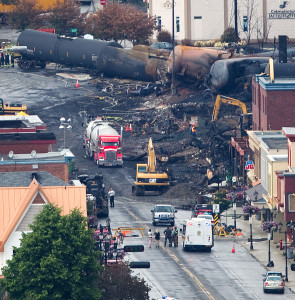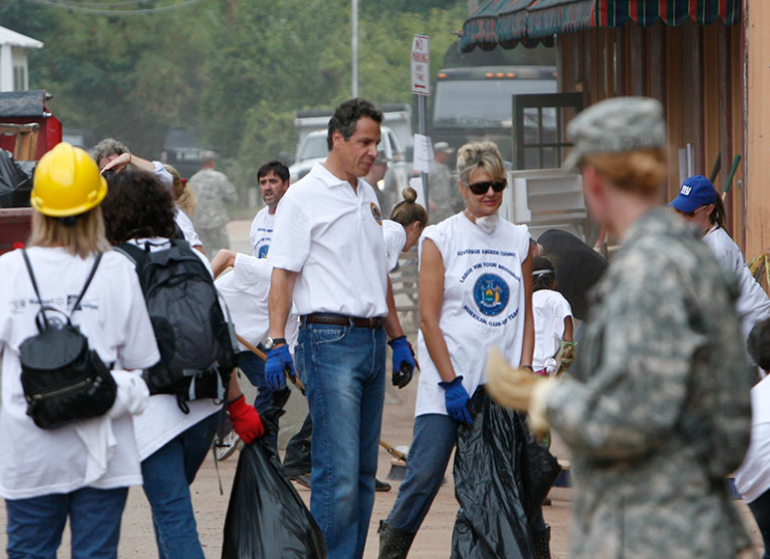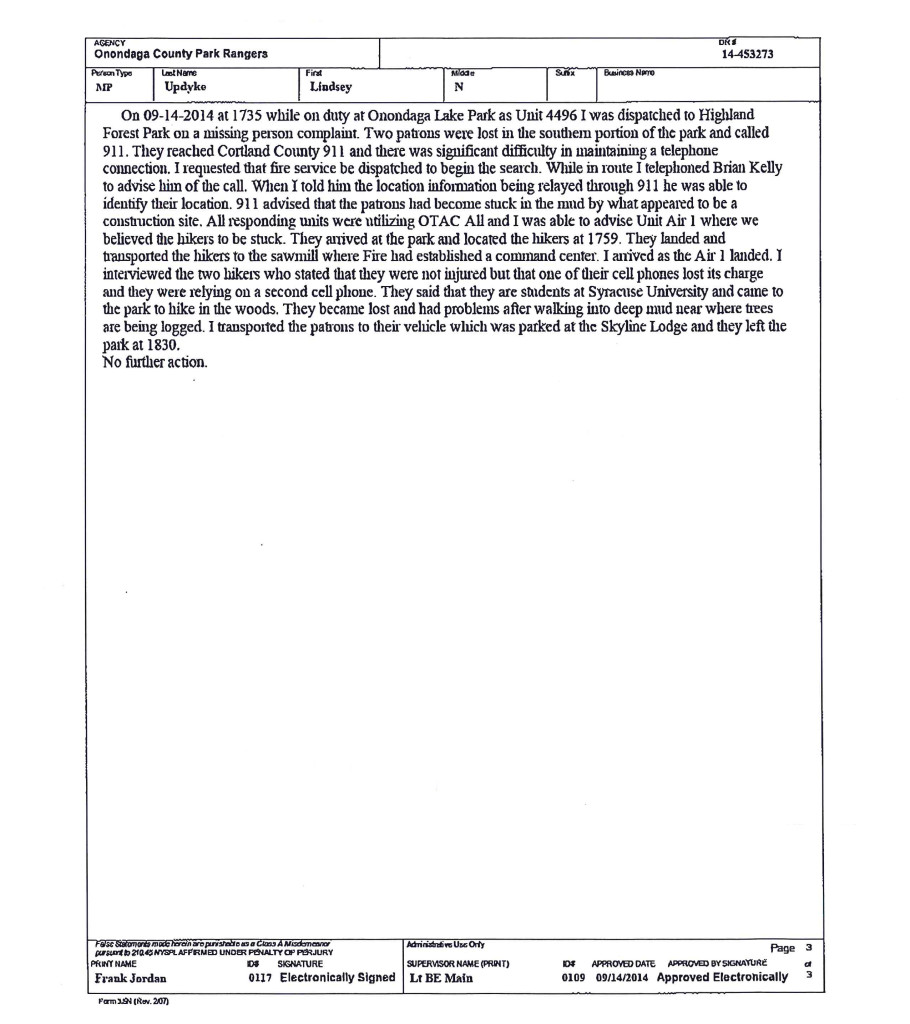Last week, hundreds of people crowded into the auditorium at ESM High School to hear National Guard troops explain how to prepare for a disaster. It was part of Gov. Andrew Cuomo’s push to help us get ready for storms, power outages and other calamities, though judging by the swag bag we all took home — see Jeff Kramer’s column here — a reasonable person, or even Kramer, might be tempted to consider it part of the governor’s re-election campaign.
You can find most of the emergency preparedness info at www.prepare.ny.gov, which opens with a photograph of the governor in a clean white polo shirt, mingling with a cleanup crew at the site of some unidentified upstate disaster.
One thing that wasn’t brought up was the possibility of a train wreck involving volatile crude oil passing through the region. These trains, each pulling a hundred or more cars of Bakken crude, pass through the Minoa rail yard each day. Communities from Canada to Virginia have learned from sad experience that these trains are not safe, and that when they go off the rails, they catch fire, blow up and kill people.
The trains pass just 0.8 miles from the high school. Other schools, senior housing complexes and daycare centers sit even closer.
Onondaga County’s commissioner of emergency management, Kevin Wisely, participated in the Q&A session after the preparedness event. He has been reluctant to speak publicly about the rail cars, and the accidents involving them, that have resulted in mass evacuations in dozens of communities. When I asked him about the plan to deal with this hazard, his response was essentially, “It depends.”

LAC-MEGANTIC, QUE: JULY 09, 2013 — A scene of the devastation in downtown Lac-Mégantic, Quebec Tuesday, July 9, 2013 after Saturday’s runaway train disaster in the small community. The train, with oil-filled cars behind it derailed. Explosions and fireballs followed causing loss of life and heavy destruction. (John Kenney /THE GAZETTE)
He said you could not focus on just one hazard when — and this is the scary part — we have stuff even more hazardous than volatile crude coming down the rail every day. In other words, don’t worry so much about the prospect of an oil train blowing up when you might instead have a poison gas or chemical leak.
The problem that county officials don’t seem to want to understand is that Bakken crude oil is being shipped in cars that were not designed to handle volatile liquids. That other stuff is dangerous, but it is traveling in the proper vessels for such cargo. The Bakken crude is not.
Wisely sought to assure the public that emergency responders had received training and that they have an app that would tell them what to do.
If you visit your local fire station, you will find that the officers do indeed have an app. So do I. And you can get it, too. The free app (ERG2012 for android and ERG2012 for iPhone) — and firefighters who have faced flaming oil tankers — tell you that there is one thing to do: Get out of there.
Burning tank cars, for the most part, can’t be put out; they are usually left to burn out. The app says to evacuate. It doesn’t say, “It depends.” It says evacuate everyone for half a mile in all directions.
So why haven’t we had evacuation drills? The answer is not on the website, nor in the backpack. County officials seem determined to play down the risk of a rail disaster and to assure us that they have things under control. They don’t. It’s not their fault; the oil trains are part of interstate commerce, and neither the county nor the state can stop them. But they can start telling us the truth, even if it is alarming.
If you want an emergency response from Onondaga County, here is one way to get it: Go for a walk at Highland Forest on a late Sunday afternoon.
That’s what Nick Canesi and Lindsey Updyke, two SU students, did. At 5:35 p.m. Sept. 14, they called 911 saying that they were lost in the woods and stuck in the mud at Highland Forest, a six-square-mile county park. They hiked five miles up an eight-mile trail until they found themselves with both legs in the mud. Updyke told the New Times that she and Canesi were able to extricate themselves with some effort.
She did not expect what happened next: a helicopter descending, intent on rescuing the pair. Updyke described the experience as “terrifying.” Perhaps it was. Canesi just called it an embarrassment and wouldn’t say more.
But did it justify sending a helicopter and crew? Neither of the students were injured. They were flown five minutes across the park, then driven to their car. They were headed back to campus by 6:30 p.m., with more than an hour of daylight to spare.
The incident report filed by the Onondaga County park rangers states that the rangers were able to determine the students’ location and advise the helicopter crew. So why not send an ATV down the trail to get them?
Who made the call to send in the helicopter? The Sheriff’s Department says it didn’t, although it owns the chopper. Ryan McMahon, who chairs the County Legislature says it was “absolutely” the Sheriff’s call. What was the cost of the five-minute ride for two nervous and muddy teenagers? And who, may we ask, is paying for it?
Ed Griffin-Nolan is a journalist who believes we have to ask the hard questions no matter whose interests are at stake. Sanity Fair is his weekly take on life, politics and society.
[fbcomments url="" width="100%" count="on"]












